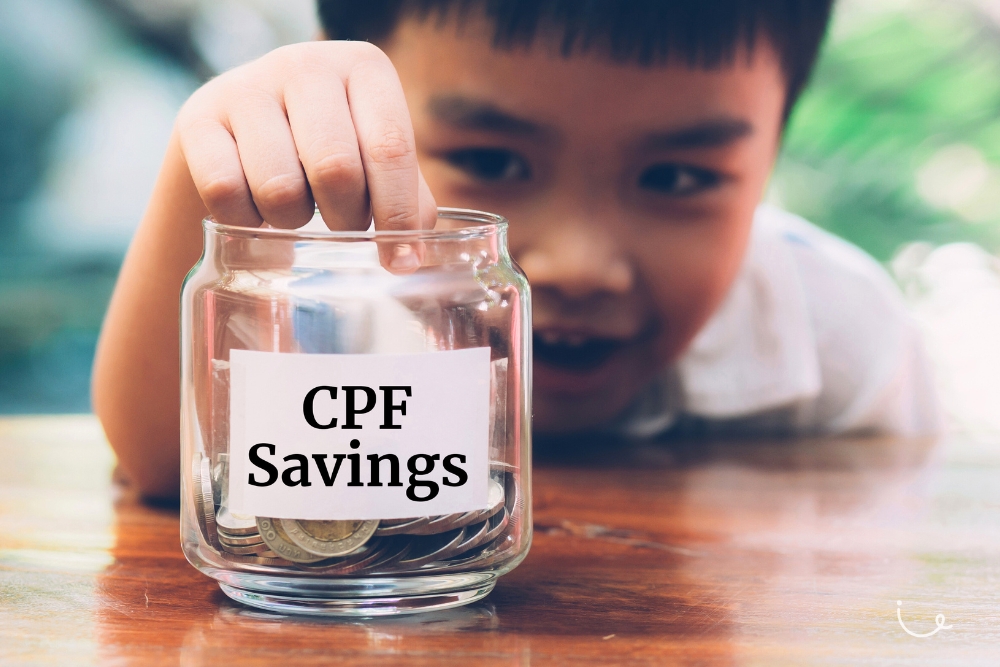
Singapore’s Central Provident Fund or CPF is usually rated as one of the best healthcare, housing, and retirement adequacy schemes in the world.
In the 2024 Mercer CFA Institute Global Pension Index for example, CPF achieved a B+ grade with a score of 78.7. This ranking places it as the best retirement system in Asia and 5th in the world.
Despite this, many individuals don’t take advantage of the many attractive features that CPF offers.
As an Associate Trainer with the Institute for Financial Literacy, I’ve taught CPF to hundreds of members of the public and have found that the vast majority have no idea how they can tap into the scheme to maximize the benefits.
Here are the first five of 10 things which you should know and perhaps put into practice for yourself or your family:
Advertisement
1. You can top up your child’s CPF Special Account only with cash, up to the current Full Retirement Sum (FRS)

First, note that all Singaporean citizen newborns automatically receive a $4,000 MediSave Grant for Newborns (MGN). This grant is deposited into the child’s CPF MediSave account and is intended to help with healthcare expenses like MediShield Life premiums, vaccinations, and hospital stays.
Parents don’t need to apply for the MGN, as it’s credited automatically after the child’s birth is registered. This means that from year 0, your child already has CPF accounts.
Second, note that every CPF member below 55 is entitled to top up their Special Account, which earns a minimum of 4% compound interest per annum, up to the prevailing FRS, which is $213,000 this year.
Note that this applies to you, the parent, as well.
Suppose well-heeled parents have this amount in spare cash and perform this top up for their baby at birth. If you know how compound interest works, this sum will double every 18 years (it’s basically 72 divided by the interest rate).
So $213,000 will become $426,000 by age 18, $852,000 by age 36 and about $1.7m by age 54!
Note that this doesn’t take into account contributions from the child when he or she starts work, so the actual figure will be a lot more.
Of course, most parents are unlikely to have that much spare cash. But even if you top up only $200 per month, it’s estimated that your child will have around $90,000 in their SA by the time they reach 21 which will then grow further after they start working.
It’s something worth thinking about to give your child a big head start in life.
Just one important point to note: These top ups must be in cash and there is no tax relief as your child is not considered “a loved one” for tax purposes. More on this later.
2. You cannot transfer funds from your CPF to your child’s CPF
All top ups to your child’s CPF have to be in cash and not via transfer from your CPF account.
Your CPF savings are meant to support your retirement needs. Your children would be able to accumulate savings in their working years. Hence, it is more important to prioritise your own retirement savings and ensure that you have sufficient funds to support your retirement needs.
This is the reason given by CPF:
It’s just something to be aware of when planning for your child.
3. Consider MediSave top ups or voluntary contributions either to yourself or “a loved one’’ or your child

The annual limit for CPF contributions is $37,740, which is the maximum amount you can deposit every year in cash either to yourself, your loved ones, or your child’s CPF.
This money will then be split into your child’s three accounts in the specified proportions.
For yourself, you can do the same. Estimate how much your annual employer-employee contributions will be for the year ahead and top up the difference to $37,740 by making a voluntary contribution. If you put in too much, you will be refunded the excess amount (without interest, of course).
When you make voluntary cash top-ups to (i) your MediSave Account up to the Basic Healthcare Sum ($75,500 this year) or (ii) your loved ones, you can enjoy tax relief for cash top-ups made in each calendar year of up to:
- $8,000 if you make a top-up to yourself ; and
- an additional $8,000 if you make a cash top-up to your loved ones.
Tax relief is also available if you top-up your Special Account (SA) or Retirement Account (RA) or a loved one’s SA or RA up to the FRS in cash.
Note that the total tax relief you can enjoy for all cash top ups is capped at the above amounts.
Also, there is a personal income tax relief cap of $80,000, which applies to all tax reliefs, including tax relief on cash top-ups made to your and loved ones CPF accounts.
It is important to note that loved ones refer to parents, parents-in-law, grandparents, grandparents-in-law, spouse, and siblings (children are excluded).
To qualify for tax relief for cash top-ups made to spouse/siblings, the recipient must (i) not have an annual income exceeding $8,000 in the year preceding the year of cash top-up (e.g. salary, tax exempt income such as bank interest, dividends and pension), or (ii) be handicapped.
4. You can put back money that you’ve withdrawn – subject to certain limits
At age 55, an individual who has set aside sufficient money in their RA is entitled to withdraw all the rest of the money in their accounts except for their MediSave.
Since the SA will be closed at age 55, this means withdrawals after 55 will come from the Ordinary Account (OA).
If you have taken money out of your OA, you should know that you can always put some (or perhaps all) of it back later if you wish to enjoy the 2.5% interest that this account pays.
Recall that the annual limit for voluntary contributions is $37,740, so this will be maximum amount that you can re-deposit.
In theory, you can continue to perform voluntary contributions for as long as you live as there is no end date for topping up or VCs.
5. Where does the bonus CPF interest go?
CPF pays a bonus 1% interest on the first $60,000 of combined CPF balances (capped at $20,000 for the OA), which amounts to $600 a year.
Since the priority is always to ensure sufficient retirement savings, this money is directed to either the SA for those below 55, or the RA for those above 55.
For those 55 and above, the extra interest on the first $30,000 is 2%, and on the next $30,000 it’s 1%, with the same $20,000 OA cap.
The extra interest amounts to another $300 and goes into the person’s RA. So if you are above 55, the maximum extra interest per year is $900.





